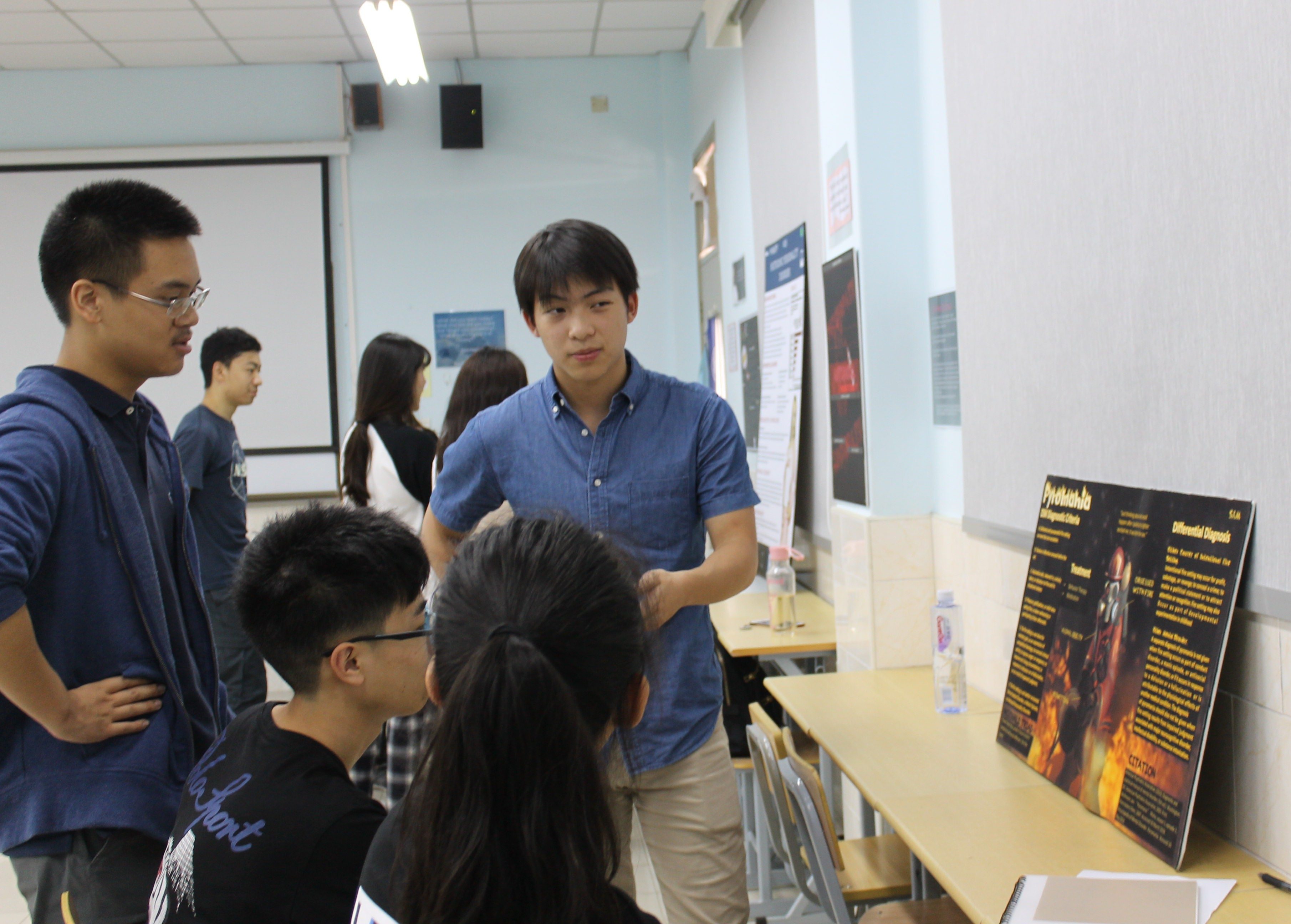AP Psychology presents mental disorders through gallery walk
From May 15th to 18th, every student from AP psychology got a chance to present one psychological disorder in the gallery walk. The exhibition, courtesy of their teacher, Mr. David Osborn, was held during 7th and 8th period on Tuesday, and 8th period from Wednesday to Friday. Five to six students introduced their respective topics with a poster at the same time, and they change every few minutes to allow all students to finish their presentation.
“Everyone from our class is assigned with a psychological disorder,” Tony Shen (CT 11B) said. Before the official presentation, the students were required to write ten journals from the perspective of a imaginary person who has the disorder they were assigned with. This is the most interesting part, because studying the disorder is completely different than trying to feel the same way as a patient.
“Many times, I would often feel really sad and gloomy for an entire day simply by writing the journal entries. It was literally a pain in the head just to imagine what this mental disorder feels like,” said Katie Liu (11A) candidly. She was assigned post traumatic stress disorder (PTSD), which is “a very severe type of anxiety disorder”. Just imagining the pain and suffering of a mental disorder patient was already overwhelming for her, as Katie said, “If I were to truly suffer through this disorder, the destructive emotions would be unimaginable. I truly began to appreciate the strength of people who could live through this disorder. This really changed my perspective on mental disorders in general, empathy and understanding is extremely important in understanding and helping people with mental disorders.”
After this, they had to create a poster introducing diagnostic criteria and how it displays therapy. The poster would be the main subject of their presentation. Then, during the week, the students did a presentation for all the mental disorders. A lot of teachers were invited to join the gallery walk, and all students were free to come. They were encouraged to discuss with the audience and answer their questions instead of just presenting their own ideas. Tony described it, saying, “…a bunch of people came to listen… (And we were) basically having a discussion with the audience.” Katie also explained the purpose of inviting people outside of class, “Mr. Osborn says it’s really important to discuss mental health issues with a broader audience.”
After the AP exam, this mental disorder project would be the one major activity the students from this class would have. Both the journals and the discussion with the audience helped the students to have a deeper understanding of a typical psychological disorder. According to Katie, “This was a really meaningful project for us. Even though I used to consider myself as someone who had a sizeable amount of knowledge in mental disorders, doing this activity made me realize that I still had much to learn.”
Featured Image – Samuel Hsu presenting his poster courtesy of Mr. David Osborn

